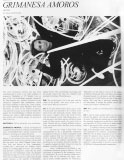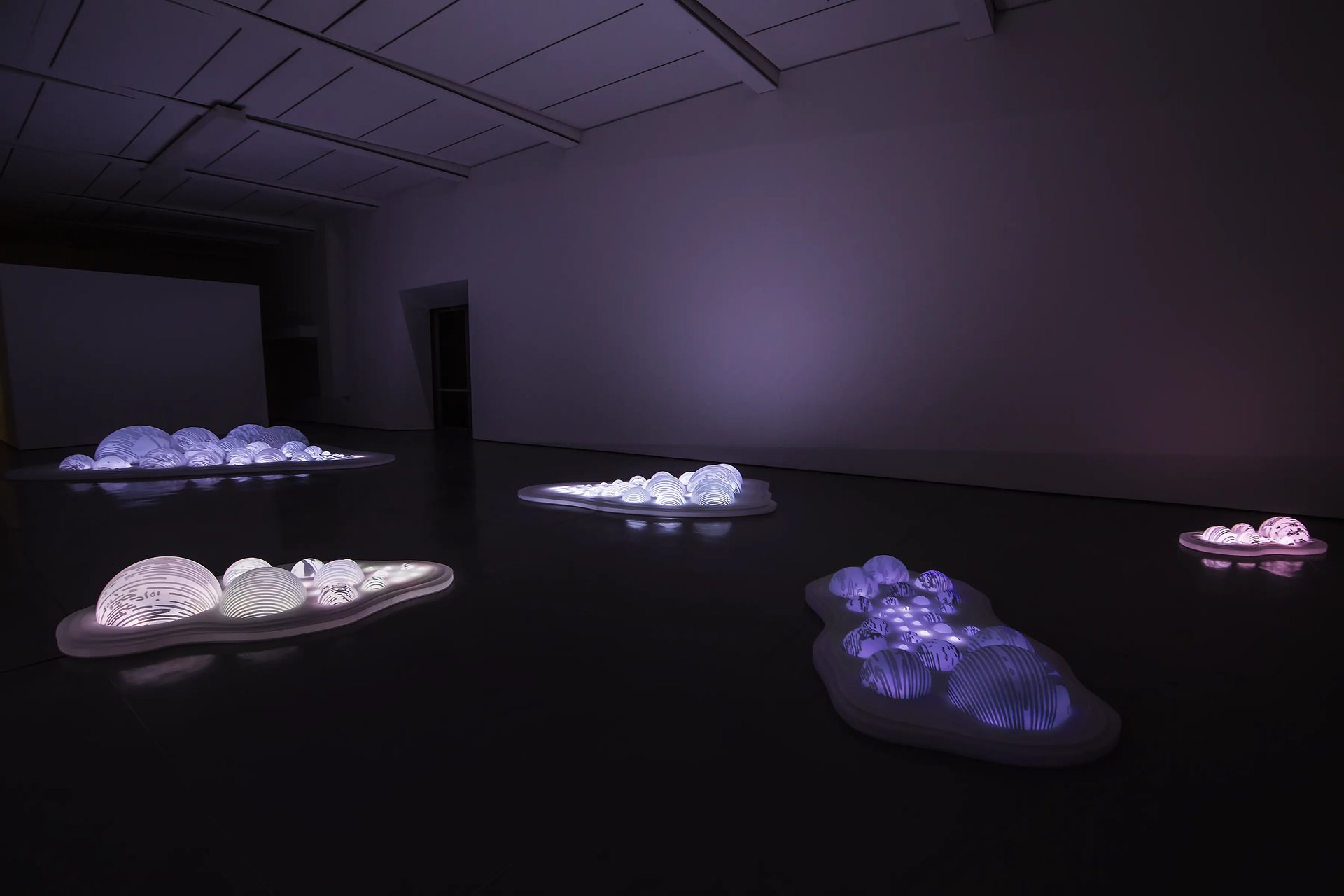PROFILE GRIMANESA AMOROS
ARTIST
By Sola Augstsson

The artist Grimanesa Amoros has just been commissioned to create a new light sculpture in downtown Manhattan at 125 Maiden Lane as part of the Art-in-Buildings program sponsored by Time Equities Inc. Amoros is known for her interactive sculptural light installations, which have been exhibited in places like Times Square, the Venice Biennale, Issey Miyake’s New York showroom, La Torre de los Vientos in Mexico City, and even a luxury cruise ship in Finland. Her project for Art-in-Buildings is entitled, Breathless Maiden Lane, and is a light sculpture installation that reflects the bustling energy of downtown New York City.
WHITEWALL: Tell me about this new installation.
GRIMANESA AMOROS: I initially developed my concept for this project by walking around Maiden Lane. I immediately felt a strong connection and interest in learning more about the street.
I researched and studied Maiden Lane’s history. To my surprise, there were many theories about the area. In one of my searches, I discovered that the street was called Maagde Paatje when New York was known as New Amsterdam. Another fact I uncovered was Maiden Lane’s history as a winding path for lovers. This winding path provides a perspective, much like the street patterns of Lower Manhattan. Early city planners patterned the majority of the streets in this area to follow pre-existing waterways, rather than the grid pattern imposed on the majority of Manhattan. For this reason, the streets of Lower Manhattan appear chaotic. The surroundings, the energy, and the people created this busy area. Maiden Lane prompted afeeling of breathlessness.
WW: You worked quite a bit in the past with the shape of the bubble. Your more recent work is more linear. Why the transition?
GA: It all came about when I did a trip to Lake Titicaca and was inspired to do a whole series about Uros, the manmade islands. Right after that series, I made a trip to the north of Peru and encountered a town called Huanchaco. As I was leaving, I saw these natives surfing in boats made of these totora reeds, the same reeds in Lake Titicaca but in a totally different region. They were much taller, and they were swaying in the wind.
As soon as I came to New York I was commissioned to do a site-specific responsive installation in Mexico, to make a sculpture inside another sculpture that was very famous. I didn’t want to continue with my other series; I wanted to respond to that sculpture specifically. This building had an amazing beautiful skylight. So I wanted to capture the light. Instead of using the bubbles, I used the tubular material.
Later I collaborated with Mutek, a very well-known electronic group in Mexico. The DJs performed in response to the sculpture’s electrical atmosphere. It was an amazing collaboration. People were all in between the lights, dancing to music created specially for Huanchaco. And I recently exhibited Fortuna, in La Fragua Tabacalera, an old tobacco factory in the center of Madrid. During the first week there were seven thousand people in attendance and this number increased over 21,000 before the end of the exhibition. The work has a universal meaning for all individuals. It brings the perfect union-the viewer, the location, and the piece.
WW: Why is public art something that is important to you?
GA: I want to make people realize art can move beyond the gallery. You can do it publicly or for an event. The thing that attracts me to public art is the amazing imagination people have when they are exposed to it. We as artists try to make people think. I put myself in the viewer’s position.
I’m always looking for the instance when light, in its changing forms, makes us contemplate and experience an ordinary circumstance in a different way. In many occasions, it can be easily taken for granted, since much of what humans perceive comes from light, yet even that which is apparent can be mysterious. I use my art as an agent for empowerment to involve viewers from all different backgrounds and communities.
